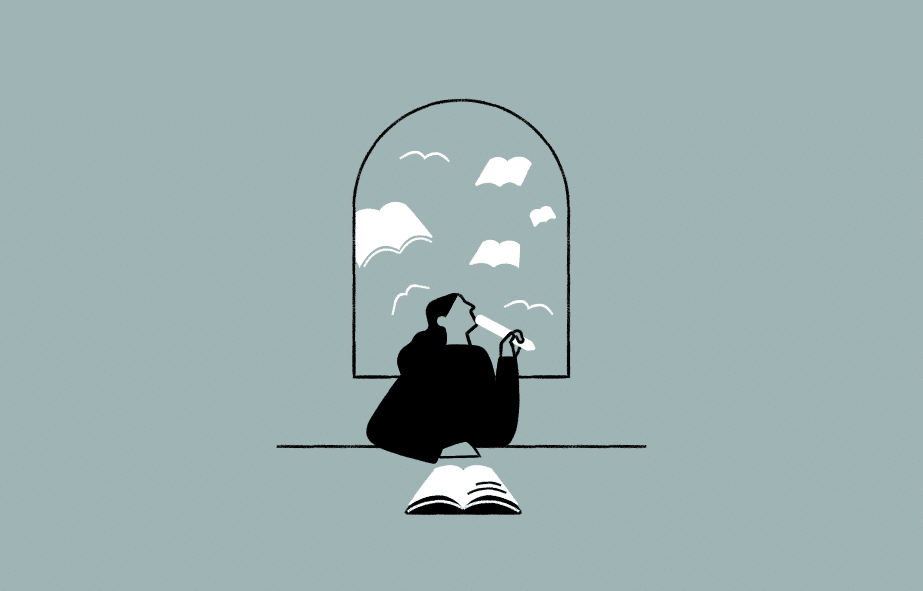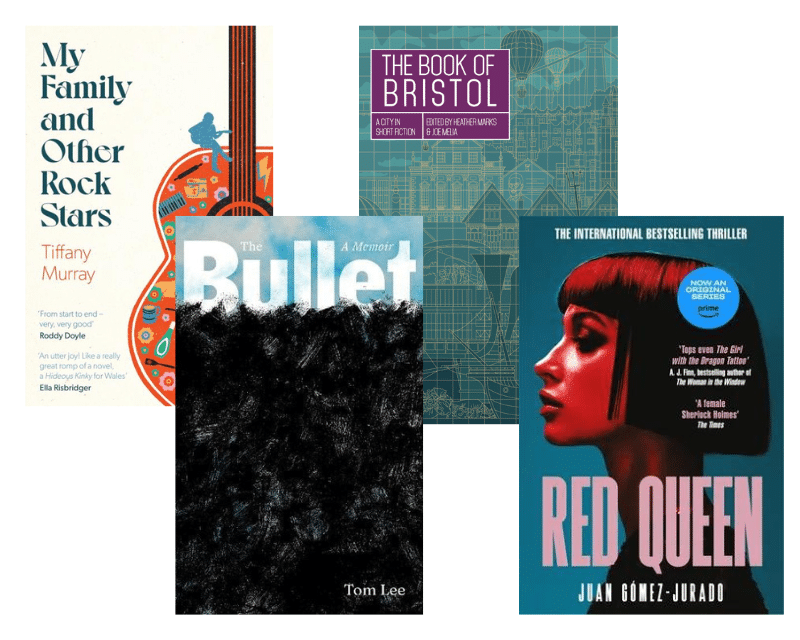- Collected
- Article
Time Capsules
Science and writing

- 27 March, 2023
- Wren James
During the summer holidays at the age of sixteen, I spent a heavenly six weeks grinding freeze-dried honeybees into powder in one of Warwick University’s science labs. I’d captured the bees myself, bedecked in a white suit and mask, from a local beekeeper’s wildflower meadow hives.
Once they were thoroughly decimated with a pestle and mortar, the powdered insects were poured into vials so their DNA could be extracted. I wanted to track down the honeybees’ origins. Not their recent Warwickshire origins, but their deep-time, historic ancestry.
Cells are time capsules. In every cell of every creature, there’s a remnant of leftover DNA in the mitochondria. This is an archaic artefact of evolution — the mitochondria was once its own living organism, which was engulfed by a larger cell back in times of prehistory.
Unlike typical DNA chains, which are mixed and matched each generation to take sequences from both parents, the mitochondria’s DNA is fixed. It stays the same between mother and offspring, generation after generation. A honeybee today has the same mitochondrial DNA as one living ten thousand years ago, except for a few little mutations here and there, which spring up at random, and are passed on to the next generation.
These mutations in sequencing are very useful for tracking where honeybees have come from. If a bee in Croatia and a bee in Derby have the same mutation – an A swapped to a G, or a C swapped to a T – then at some point in their history, those two bees had a common ancestor. This lets us create a family tree of bee populations throughout time, stretching as far back as the earliest honey queen, the biblical Eve of bees.
I wanted to work on the honeybee project, despite the macabre bee-killing I’d have to endure, because I’ve always been interested in communications across time. It’s harder than you might think to decode messages from the past. Often the DNA inside our cells is easier to understand than an actual message left by a living, breathing human being.
Hidden in the darkness of caves across Europe are masterpieces of ice-age art, which have survived for tens of thousands of years. These enigmatic drawings of horses, deer and mammoths remain mysterious, even after decades of study. It was only early in 2023 that an amateur detective decoded some of the markings carved into the rock. The parallel lines etched next to different animal drawings are now thought to be calendars showing the number of months after spring in which each species gave birth.
We don’t understand most of the messages left by those long-dead artists, but we could easily sequence their mitochondrial DNA from a bone fragment to determine which of the ‘daughters of Eve’ they descended from, tracking their lineage back to our most recent common ancestor, who lived in the earliest human tribes some two hundred thousand years ago.
I’ve always loved the idea of having an undisturbed time capsule hidden inside my cells. A message inherited from that early ‘Eve’. It was the inspiration for an early story of mine, written when I was undertaking my honeybee detective work.
Science has always been linked to my creative writing. Inspired by my research into ancestry, I wrote The Quiet at the End of the World about a global pandemic which makes humans infertile. The last generation is devastated by the knowledge that the human race is going to go extinct. As their cities and skyscrapers start to empty, the endlings must decide what kinds of time capsules they want to leave behind for the future, like that early Eve’s mitochondrial DNA.
Humans have carved our place on Earth’s surface, from ice-age art to the ridges and furrows left by ancient farming. A layer of plastic fossilised in the rock. A significant quantity of Coca-Cola-branded litter and carbon dioxide in the atmosphere. Our legacy is often not something to be proud of, which is part of what makes it so compelling to write about. How do you write a story about humanity which encompasses everything we’ve done to this planet, in a way that showcases the best of us rather than the worst?
It’s possible that if we did go extinct, there would one day be another species which evolved to become sentient enough to examine our remains. Octopi, corvids and dolphins are all highly intelligent in their own ways. To those future archaeologists, humans would just be one of the thousands of fossilised species buried underground.
Five million years ago, the oceans were filled with an explosion of exotic and alien creatures. These Cambrian-era beasts had unusual body parts — armour plating; extendable, dynamic trunks; protruding eyes on tendons. Their fossils appear fantastical and implausible; aliens from an imaginative science fiction novel. But they existed. Once, they were our ancestors. Five million years from now, our descendants could marvel at the mysteries of Homo sapiens skeletons. They might attempt to badly recreate our image from the fossils, as we do with dinosaurs.
In The Quiet at the End of the World, I suggest that the human line will continue after our extinction through children built with robot bodies and computer-programmed intelligence. Those artificial offspring forget their original non-biological origins and live as humans. Mathematical, technological people.
Science is often the only thing which can survive over long distances of time. More than four thousand years ago, South American communities recorded information using ‘quipu’ — a complex system of knotted strings that was later adopted by the Incas. This medium remained untranslated until 2017, when one example was decoded by comparing the knots to the numerical data in a seventeenth-century Spanish census document from the same period. Just like that early ice-age animal reproductive calendar, the message was decoded through maths. Numbers stay fixed while language marches on with each new generation, ever shifting.
We’ve learnt from this. The messages we leave for the future are now mathematical. In 1935, during construction of the Hoover Dam, a terrazzo floor was inlaid with the orientation of the stars at the time of its installation. When NASA launched the Voyager spacecraft in 1977, they included a golden record engraved with a diagram of a hydrogen atom. Something intergalactically translatable, which aliens would be able to interpret. An immutable fact recognisable through any form of intelligence. Octopus, crow, or otherwise.
Today, we’re still trying to find ways to leave complicated messages for far-future generations, so that we can mark out places of significance. The doomsday Svalbard Global Seed Vault or a nuclear waste storage site. Places to visit or avoid at all costs.
How do you warn someone of danger when they don’t speak your language? When it’s likely that any message you leave will become untranslatable within a few thousand years? If the ice-age cave art or Inca quipu had been used to warn us of the dangers of radiation waste, it’s likely we wouldn’t be able to heed their warnings.
The semiotics of these messages is the topic of much debate. It’s a good starting point for a story, too. The best science fiction takes an outlandish idea – like an alien octopus trying hopelessly to decode the message ‘what is here was dangerous and repulsive to us’, carved on the stone wall of a mysterious glowing chamber – and uses it to cast some light on the intricacies of human nature.
As a writer, I aim to write books about the core traits and desires which unite us as a species. I find common goals that connect people who lived a thousand years ago, with those who will live a thousand years into the future. The NASA scientists who launched the Voyager had the same goal as the people who carved the Uffington White Horse out of chalk on a hillside, three thousand years ago. They wanted to leave something indelible behind for the future. Something that could be understood.
All forms of writing are messages left for the future. Our stories and poems are a way of reaching out and asking to be understood. A time capsule preserving as much of our consciousness as we can transcribe, outside the realms of DNA or Artificial Intelligence.
Writing is a connection from one mind to another. A record that says: I was here. I existed. I created. Remember me.
You might also like:
Anywhere But a Room of One’s Own
I am a writer looking to be re-homed. All I need is a laptop, a table and a chair, and…
RLF Fellows’ News: May 2024
Publishing RLF Fellow Tom Lee’s new book, The Bullet, his memoir about family and mental health, has recently been published…
Her Majesty The Queen is announced as our new Royal Patron
To mark the first anniversary of Their Majesties’ Coronation, it has been announced Her Majesty The Queen will take on…


